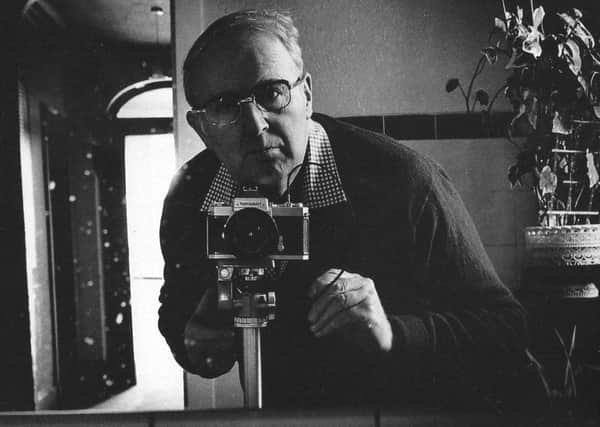Obituary: Joseph McKenzie, photographer


Internationally acclaimed photographer, Joseph McKenzie, who established the photography department at Dundee University’s Duncan of Jordanstone Art College, has died.
Known by many as “the father of modern Scottish photography”, Joseph McKenzie was one of the most ambitious and prolific post-war photographers. He only used black and white images and his most famous, and sometimes controversial, works focused on urban decay.
Advertisement
Hide AdAdvertisement
Hide AdBorn in London in 1929, he was educated in Hoxton and then, during the war, at Cranborne in Dorset.
After conscription, and regular service in the RAF as a photographer (1947-1952), he studied photography at the London College of Printing from 1952-1954. He was invited to introduce photography as a lecturer to St Martin’s School of Fashion, London, in 1954, and was later appointed lecturer in photography at the Duncan of Jordanstone College of Art, Dundee, a position he held until he retired from the post in 1986.
Throughout his career, he won international recognition and was elected an associate of the Royal Photographic Society in 1954, a position he held until 1973.
In 1969, he was awarded third prize in the Nikon International Photographic Contest as well as becoming the first living photographer to be awarded a grant by the Scottish Arts Council. As further tribute to the regard in which he was held, he was commissioned to photograph HRH The Duke of Edinburgh and Lord Mountbatten.
He was one of the first photographers to put on a purely photographic exhibition in the UK, and later became one of the first to establish a private gallery in Scotland. In 1965, he embarked on a series of major exhibitions with Glasgow Gorbals Children, which were shown across Scotland.
This was followed by Dundee – A City in Transition the following year, a series made to commemorate the opening of the Tay Road Bridge.
Famously, it captured images of the city before it was transformed by developers who, he said, “wiped away” much of its architectural heritage.
He later exhibited Dunfermline and its People before Caledonian Images was toured throughout Scotland by the Scottish Arts Council in 1969.
Advertisement
Hide AdAdvertisement
Hide AdThe following year his Hibernian Images exhibitions caused controversy after it compared the lives of young people in Northern Ireland and Scotland.
An attempt to censor his catalogue led McKenzie to withdraw from public exhibitions of his work for many years.
However, in August 1987, the Third Eye Centre hosted a retrospective exhibition of his work entitled Pages of Experience; photographs 1947-1987 and a companion book was published.
In 1990, he published another book to commemorate his works on Gorbals children: Gorbals Children: A Study in Photographs.
His works are represented in a small number of public and private collections, including the Victoria and Albert Museum in London, the National Portrait Gallery of Scotland, the Carnegie Dunfermline Trust and The Scottish Arts Council.
His legacy will no doubt live on through his family.
Scottish artist Calum Colvin said of him: “A brilliant photographer and a generous teacher, he taught me a huge amount and helped me establish my career as a photographer (along with countless others including the massively famous Albert Watson).”
The Scotsman described him as having “the eye of a true poet. The tonal brilliance of his prints… marks the excellence of his craftsmanship, but their compositional arrangements brim with a superb variety of exciting balances, patterns and textures, and are stamped with an inventive interpretation that is most remarkable.”